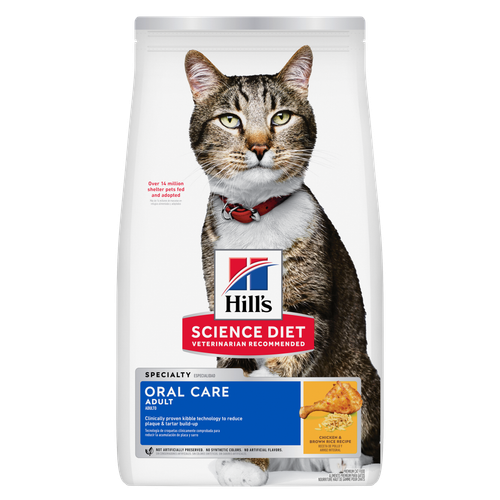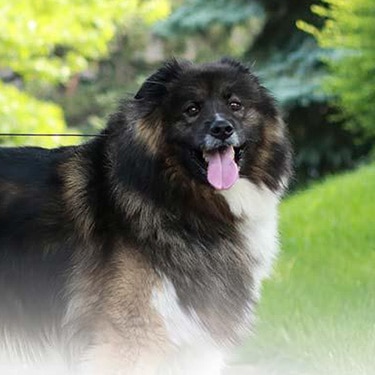
-
Find the right food for your petTake this quiz to see which food may be the best for your furry friend.Find the right food for your petTake this quiz to see which food may be the best for your furry friend.Health CategoryFeatured products
 Hill's Science Diet Adult Healthy Mobility Large Breed Chicken Meal, Barley & Brown Rice Recipe Dog Food
Hill's Science Diet Adult Healthy Mobility Large Breed Chicken Meal, Barley & Brown Rice Recipe Dog FoodAdvanced nutrition shown to support joint health and improve mobility
Shop Now Adult Light Large Breed Chicken Meal & Barley Recipe Dog Food
Adult Light Large Breed Chicken Meal & Barley Recipe Dog FoodFewer calories for less active large breed dogs
Shop Now Adult Large Breed Chicken & Barley Recipe Dog Food
Adult Large Breed Chicken & Barley Recipe Dog FoodSupports healthy joints, lean muscle, and beautiful coat for large breed dogs
Shop NowFeatured products Adult Sensitive Stomach & Skin Pouch Variety 12 Pack Cat Food, Chicken & Beef, Salmon & Tuna
Adult Sensitive Stomach & Skin Pouch Variety 12 Pack Cat Food, Chicken & Beef, Salmon & TunaCarefully made, gourmet daily nutrition. Tasty chunks with Salmon & Tuna in a decadent gravy. Supports digestive health, nourishes skin and promotes a lustrous fur.
Shop Now Adult Oral Care Chicken & Brown Rice Recipe Cat Food
Adult Oral Care Chicken & Brown Rice Recipe Cat FoodClinically proven kibble technology to reduce plaque & tartar build-up
Shop Now Adult Perfect Digestion Chicken, Barley & Whole Oats Recipe Cat Food
Adult Perfect Digestion Chicken, Barley & Whole Oats Recipe Cat FoodHill's Science Diet's breakthrough nutrition supports ultimate digestive well-being & healthy microbiome
Shop Now -
DogCat
- Cat Tips & Articles
-
Health Category
- Weight
- Skin & Food Sensitivities
- Urinary
- Digestive
- Kidney
- Dental
- Serious Illness
-
Life Stage
- Kitten Nutrition
- Adult Nutrition
Featured articles Adopting a Pet: What You Need to Know
Adopting a Pet: What You Need to KnowLearn the basics of adopting a pet, including where to begin and common questions you should ask yourself when deciding which kind of pet is best for you.
Read More Fun Ideas for Kids and Pets This Summer
Fun Ideas for Kids and Pets This SummerOutdoor summer activities with your dog or cat can be fun for kids, too. Learn how they also teach kids responsibility & creates a bond with their pet.
Read More Cat vs. Dog: Which Is the Best Pet for Me?
Cat vs. Dog: Which Is the Best Pet for Me?Learn about important differences between dogs and cats, such as cost & space considerations. These factors can help you decide which pet is best for you.
Read More -


Just like humans, dogs are suffering in greater and greater numbers from obesity. The Association for Pet Obesity Prevention estimates that 54 percent of dogs are overweight. Dogs that pack a few extra pounds may be more susceptible to conditions like arthritis. That's why exercise for dogs isn't just a fun activity for your furry friend, it's a necessity to keep your pup physically well.
Exercising your dog also keeps him happy! Dogs that blow off steam regularly are less likely to engage in destructive and attention-getting behaviors like chewing, nonstop barking and biting. They also feel more connected to you, making the bond between pet parent and dog stronger.
Now that you're sufficiently motivated to get you and your four-legged fitness buddy off the couch, let's talk about the right kinds of exercise for your dog.
Different Needs at Different Life Stages

The exercise needs of a puppy as compared to a senior dog are obviously different. A pup is a squirmy bundle of lovable energy that can play seemingly endless games of fetch, race in circles at the dog park or happily chase the kids around the backyard for an entire afternoon. A senior dog, on the other hand, might rather take walks instead of the runs he used to love. But a senior dog still needs exercise. Just like their human counterparts, senior dogs need exercise to aid mobility, maintain a healthy weight and to stay mentally stimulated. Be aware of how physical activity impacts an aging dog after your workout. If your dog appears to suffer from joint pain or arthritis, talk to your veterinarian about how to minimize his discomfort while exercising your dog. Swimming, for instance, is one exercise that gives your dog a workout while minimizing joint pain. Also, if you go on long walks make sure to bring water with you to keep him hydrated and try to keep the walks close to stopping points in case he gets tired. If you notice him struggling, make sure to stop and rest.


Tasty Tips
Know Your Dog's Needs, Limitations
The idea of healthy exercise for dogs varies for different breeds and sizes of dogs. Dr. Marty Becker, DVM outlines how the needs and abilities differ from dog to dog. Take these suggestions into account the next time you take your pup out for some fun.
- Dogs with short snouts, like Pekingese and bulldogs, don't have much tolerance for exercise and can overheat — or even die — if they overexert themselves. Walking is often the best exercise for them. Likewise, swimming is not something many dogs with shorter snouts take to.
- Dogs with long backs and short legs, like corgis and dachshunds, are prone to back injuries. That means catching Frisbees® shouldn't be on your list of physical fun if you have one of these breeds. Other injuries are common in specific breeds, so take your dog's pedigree and physical characteristics into account when you choose an activity.
- Also, be aware of what type of exercise your dog is bred to enjoy. Retrievers, for instance, are bred to fetch and swim so will most likely enjoy paddling into a lake or playing fetch with you for hours. Greyhounds, conversely, are bred for short bursts of speed. They love to run, but after a short, intense workout are likely to be ready for a nap. Shepherds are bred to herd, so take this into consideration when coming up with fun exercises for him to enjoy.
- How long and thick is your dog's coat? A dog with a thick coat, like an Akita or German shepherd, might get overheated in the summer faster than a dog with a short thin coat. A dog with a short thin coat, however, like a Boston terrier or a boxer, will have less tolerance for cold weather.
Not sure what type of exercise for dogs is best? Prevention Magazine offers a helpful guide on the different exercise needs for different breeds of dogs.
Choice of Food Is Important, Too
Just like with humans, the type of food a dog eats can affect his energy level. Hill's® foods can also help a dog with specific health problems that might impact their ability to exercise. Talk to your vet about what food is right for your dog throughout his life stages.
You also want to make sure that your dog maintains a healthy weight as he ages. Being overweight exacerbates physical issues and shortens lifespans. If your dog needs to shed a few pounds, consider food that is lower in calorie and designed for weight management.
Water is also essential to exercise. Make sure your dog is staying hydrated before physical activity. A lack of water can lead to overheating much quicker causing larger health concerns.
Start Slow and Build Up
If you're starting a new exercise regimen with your dog, be sure not to overdo it. Just like with their human family, dogs need time to build up stamina. You should also consult with your vet before starting a new exercise regimen to see if he or she has any advice about how to get started and what kind of meal plan your dog should maintain. Also, pay attention to how your dog feels and acts during and after exercising. Keep in mind, for example, how hot the day is and that concrete and asphalt can be rough or burn a dog's feet.
The benefits of exercise for dogs are both immediate and long lasting. Your furry companion is important to you, and keeping him in shape physically will help him live a long, happy, and healthy life. Now snap on the leash, grab some water and a waste bag, and get going!
Contributor Bio

Kara Murphy
Kara Murphy is a freelance writer in Erie, Pa. She has a goldendoodle named Maddie.


Kara Murphy is a freelance writer and pet parent who lives in Erie, Pa. She has a goldendoodle named Maddie.
Related products

Advanced nutrition shown to support joint health and improve mobility

Fewer calories for less active dogs

Fewer calories for less active large breed dogs

Supports healthy joints, lean muscle, and beautiful coat for large breed dogs
Related articles

A little exercise can make a big difference. Not only will it enhance your pet’s health, but it will beef up your relationship as well.

Though it may seem like your four-legged friend loves nothing more than to nap on the couch, dogs need regular exercise to stay healthy just like people do.

Learn about choosing the right dog food to help ensure your mature older dog will receive the correct balance of nutrition.

Learn how to stop your dog from begging at the dinner table, and understand how it can help contribute to his health.

Put your dog on a diet without them knowing
Our low calorie formula helps you control your dog's weight. It's packed with high-quality protein for building lean muscles, and made with purposeful ingredients for a flavorful, nutritious meal. Clinically proven antioxidants, Vitamin C+E, help promote a healthy immune system.
Put your dog on a diet without them knowing
Our low calorie formula helps you control your dog's weight. It's packed with high-quality protein for building lean muscles, and made with purposeful ingredients for a flavorful, nutritious meal. Clinically proven antioxidants, Vitamin C+E, help promote a healthy immune system.

